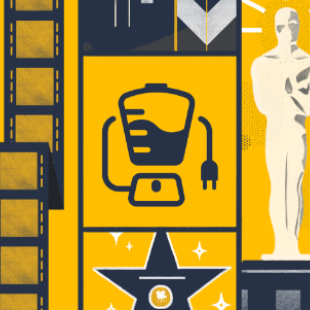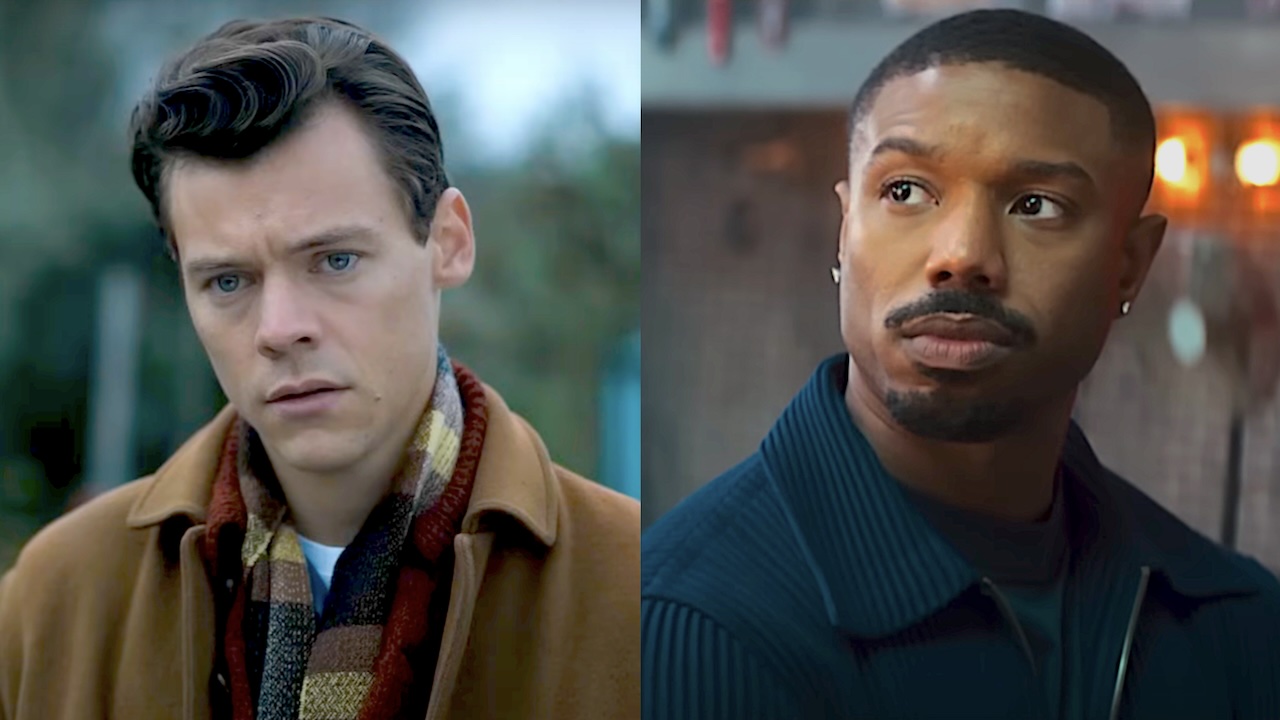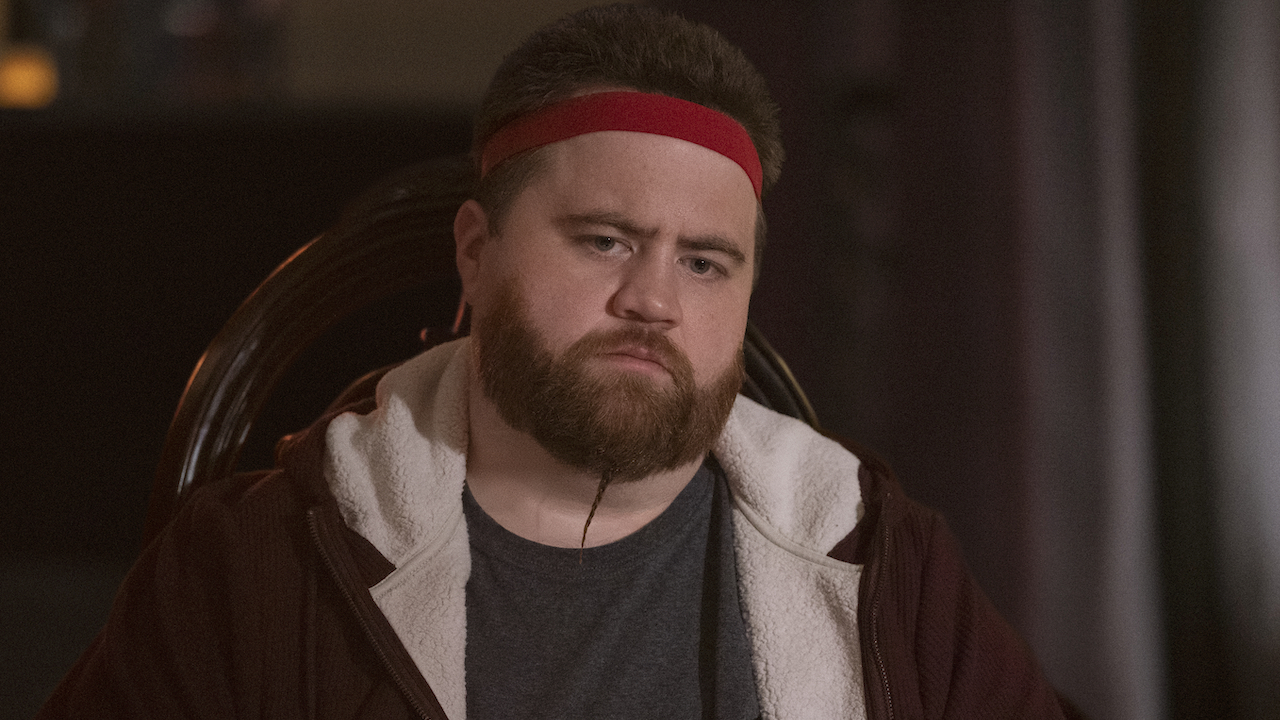Prometheus Ending: How Does This Movie Connect To Alien?
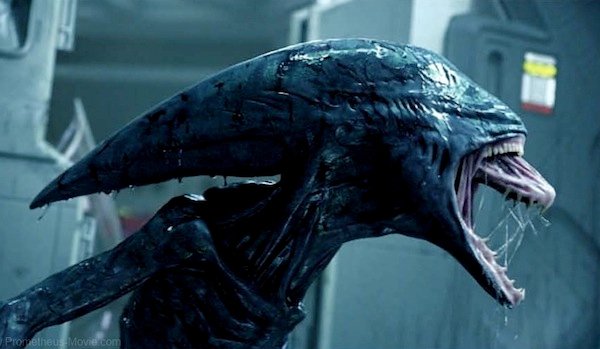
Ridley Scott's Prometheus is a movie that catches a lot of flack. Admittedly, some of it is well deserved. Seriously, it has the dumbest characters with the worst decision-making skills ever put on screen. As a precursor to the Alien movies, it obviously doesn't live up to the (possibly unfair) expectations piled upon it before release. People were hoping for something epic and game changing to the point where anything less would have been a disappointment. And guess what? It ain't perfect, not by a long shot. But that doesn't mean it's completely without redeeming qualities.
Scott has said that while Prometheus isn't a prequel to Alien, and there may not necessarily be a causal link between the two, it does exist in that world, and the ties between the two are strong indeed. This film may take place much earlier on the timeline than the previous films, but throughout, Scott weaves in countless allusions and references to Alien, the horrifying xenomorphs, and elements that we know will come into play in the future. In this way, Prometheus sets the stage for Ellen Ripley, the Colonial Marines, and the action that is to follow. Much of that happens at the end of the film, and is definitely worth talking about moving forward. Let's talk about how the end of Prometheus connects to Alien:
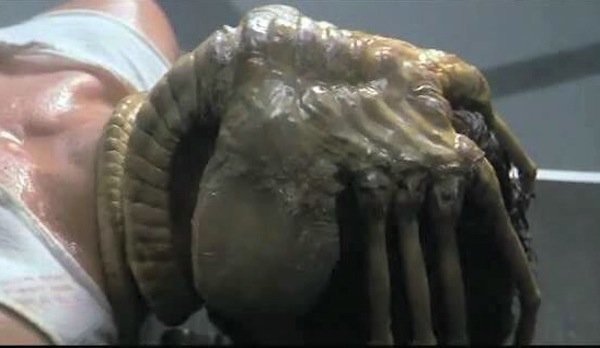
Birth Of A Facehugger
Springing from the twisted mind of Swiss surrealist H.R. Giger, the xenomorphs -- the heinous, armor-plated killing machines that populate the various Alien films -- rank among the most horrifying movie monsters of all time. But the first extraterrestrial presence we meet, however, are the facehuggers. You know, the nasty little buggers that latch on to your face and impregnate you with a xenomorph that, after a proper incubation period, will ultimately burst out of your chest and kill you.
In Prometheus, we witness what appears to be the birth of the first such facehugger, also known as a Trilobite. It's a roundabout process, to be sure, but the creature's origins lie here. When the crew of the Weyland Corporation (not Weyland-Yutani yet, but we'll get to that) ship Prometheus lands on the moon LV-223, one of the many things they find is a room full of "vases," which closely resemble the rooms full of eggs from the earlier movies, the very same eggs that hatch the facehuggers. But we still have a few evolutionary steps to go.
The nefarious robot David (Michael Fassbender) takes the viscous black substance he finds in these vases and slips a dose to Dr. Charlie Holloway (Logan Marshall-Green). It's unclear whose orders David follows, but he is the one who may be responsible for jumpstarting the xenomorph evolution. This scenario, as you probably remember, does not go particularly well for ol' Charlie, as it messes with his body something awful. Before he winds up burned to a crisp, he has sex with Dr. Elizabeth Shaw (Noomi Rapace), which is impressive because she was previously unable to conceive.
Whatever the result, the fetus is not human, it's some sort of squiggly, human-alien hybrid monster, and when she cuts the rapidly gestating spawn out of her belly in the latter portion of the film, the creature may be the first facehugger. Initially, it looks like some sort of angry, demented space squid, but when it latches onto the Engineer---actually specifically when it dies and falls off of the Engineer---it is very obviously akin to the little buggers.
Physically it is much larger than previous facehuggers we have seen, and unlike the ones we've seen before, it kills the host, but the end result, as we see shortly after the credits role, is the same. How these changes happen is somewhat unclear, especially as they take place over a relatively short span, evolutionarily speaking---Prometheusis set around 2090, while Alien takes place in the year 2122. The implication is that, unless these creatures have an extra-fast evolutionary process, they had a helping hand. Perhaps it was the Engineers tinkering with something they didn't quite understand. But another likelihood is that Weyland-Yutani did their own genetic messing around. They've attempted to weaponize the xenomorphs, and they're certainly less that scrupulous in matters such as these.
CINEMABLEND NEWSLETTER
Your Daily Blend of Entertainment News
With this link, Prometheus and Alien share similar psychological tropes that tap into primal fears about parenthood that have been used many times in horror. There's something unknown, uncontrollable growing inside of you. You worry about what happens if it's evil, and the possibility that what you create, what you birth, will ultimately kill you. This is especially heightened in Elizabeth's case, as with her earlier inability to conceive, whatever this is isn't natural.
For his part, David serves a similar purpose. At one point, Peter Weyland (Guy Pearce) says that the android is as close to a son as he has---though it's later revealed he has a daughter, Meredith Vickers (Charlize Theron)---and the robot is really the doom of his creators. These themes of killing your parents, literally and metaphorically, are all over Prometheus. The Engineers made weapons in order to destroy their own creation on Earth, which then got loose and killed them.
But the connection only starts with the facehuggers. Read on.
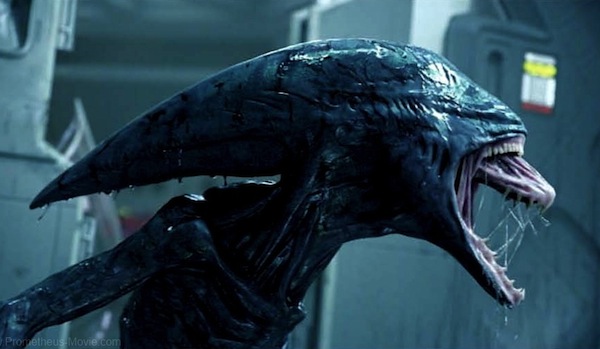
Enter The Proto-Xenomorph
Perhaps the most obvious connection to Alien in Prometheus happens just after the credits start to role. After Elizabeth and David take off to find the home world of the Engineers, we return to the escape pod where we see the corpse of the Engineer and the facehugger. We then witness a familiar sight, a very xenomorph-like creature, known as the Deacon, tearing its way out of the torso of its host. Like the facehugger before it, there are clear differences between this creature and those from Alien and beyond, but there is a definite family resemblance.
Again, the question arises of just how this creature, in just a few short decades, comes to be the vicious beast Ripley tussled with in 1979. Things are just a bit off from what we know: the mouth within a mouth is different; the shape of the head is almost the same, but not quite; and this creature comes out more fully formed than the later incarnations, bigger and more developed. That last one, the size, is likely the reason for the immediate death of the host.
Somehow over the ensuing few decades, these creature, who we've seen have accelerated growth rates, travelled from LV-223 to LV-426, where Ripley and the ill-fated crew of the Nostromo encounter them in Alien, when Ripley and her crew come across the so-called "Space Jockey" -- what we now know as an Engineer, in the remains of a derelict ship that was transporting the facehugger eggs. There are number of possibilities of how this could happen.
David does say there are "many ships" on LV-223. The Prometheus crew only explores a small portion of the moon (in fact, they get pretty lucky, spotting what was an inhabited region right off the bat), and it is suggested that there are other similar scientific outposts such as this scattered throughout deep space. So at some point after the events of Prometheus, it's possible that Engineers from elsewhere happened upon this particular site and urged them forward.
The likelihood is that the engineers encountered the Deacon and gave its development a gentle, or not so gentle, push. We've seen the creature's rapid development, both as a fetus and how quickly they mature, so it's possible that with an artificial hand, this process of evolution could be controlled, directed, and enhanced in the time between Prometheus and Alien. It wouldn't be the first time the Engineers tried to create a weapon, and perhaps what Ripley and company stumble across on LV-426 is the next generation of their attempt to wipe out life on Earth.
Who else might have had a hand in their evolution? We have theories.
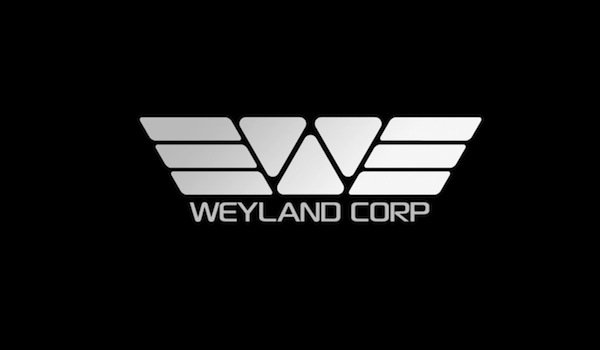
The Impact Of The Weyland Corporation
You'll notice a familiar logo in Prometheus, that iconic W, and though there is a slight difference, this is one of the most overt connections to Alien. Instead of the familiar Weyland-Yutani name splashed across the front of T-shirts and on every available surface, this time around it simply reads "Weyland Corporation." There is, of course, a very good reason for that. W-Y is a massive global corporate conglomerate, and it is really the culmination of two companies coming together---the Weyland Corporation and Japan's Yutani Corporation.
Occurring in the late 21st century, this merger obviously takes place sometime between 2093 and 2122. With Peter Weyland kicking the bucket in Prometheus, one can infer that perhaps the events on LV-223, and his death, and the death of his daughter, Meredith Vickers, had a role to play in the company being open to combining with another.
Weyland-Yutani has, in earlier movies (as well as a number of the accompanying novels), dispatched agents with the expressed purpose of obtaining live specimens of the xenomorphs so they could be weaponized. They obviously have some shady motivations, and are more than willing to put the lives of their employees in harms way in order to make a profit.
While there's a bit of a different tack, we see a similar disregard for human life in Prometheus. An automaton, David (Michael Fassbender) is clearly not acting of his own volition---you wonder, and there are a least hints of sentience and a malicious bend to his actions, but there is also someone else pulling the strings, and the obvious choice is that it's Peter Weyland, David's "father." When he doses Charlie, keeps secrets, and explores the remains of the ship on his own, cutting the video feed from his helmet, it is all an experiment, and exploration---and how David loves explorers, reflected in his fascination with Lawrence of Arabia.
We don't know that Weyland is explicitly looking for a weapon, for something Weyland Corp. can turn into a marketable commodity. While everyone else is out looking for God, looking for the architects of humanity, David, consciously or not, causes what could very well be our downfall. His actions at the behest of his corporate masters essentially jump-start the process of creating the xenomorphs---he doses Charlie, who impregnates Elizabeth, who births the early facehugger, and on---which, as we have seen in the future of this world, has disastrous results in a number of situations.
The Weyland Corporation's meddling fingerprints are all over the action in Prometheus. Their interference, driven by the cartoon dollar signs in their eyes, has a massive, not to mention devastating, impact on the events of the film and beyond. This also sets the stage for Weyland-Yutani poking their nose into areas they don't, and can't hope to, understand, again with less than optimal results for everyone involved, and establishes the thread of corporate intrusion and the profit-above-all approach that flows throughout the events of the Alien film.
It seems unlikely, given the company's reaction to encountering the xenomorphs later on, that they had any overt hand in creating them. But like the facehugger and the proto-xenomorph, in Prometheus, we witness the birth of a different kind of monster.
These are the main connections that we saw, particularly in the closing scenes of Prometheus. What did you see? Be sure to hit the comments section below and weigh in with your feedback on all things Alien.
